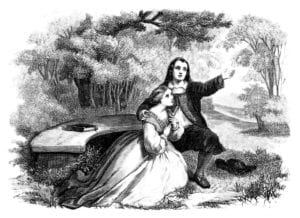Sonnets 64 – 77
Sonnet 64
Summary: change and loss are inevitable, and there are many examples – from human monuments to the natural world, from individual humans to the state, the evidence of “Ruin” is pervasive, and it leads to the conclusion that all possession is time-limited and loss unavoidable.
Note: the poem comprises two sentences. The first of these ends at line 12, a complex sentence in which subordinate clauses (opening with the conjunction “When”) pile up in anticipation of the main clause ”Ruin hath taught me thus”. There follow three further main clauses in lines 12 and 13.
Question: how does the structure of the poem contribute to its overall impact?
Sonnet 65
Summary: the poet asks how something as fragile as “beauty” can be expected to survive when everything in life is subject to “sad mortality”. Similar rhetorical questions might be asked of summer and other valuable but doomed aspects of life. Only his poems and his love will survive.
Note: the poem opens with four questions (strategically positioned for impact at lines 4, 8, 10 and 12), to which an answer is offered in the closing couplet. The three exclamations (“O”) at lines 5, 9 and 13 seem to underline the poet’s sense of frustration at life’s “sad mortality”.
Question: how does this sonnet compare with 64, which presents a similar diagnosis but reaches a different conclusion?
Sonnet 66
Summary: the poet lists a number of disappointing features of life and the world from which “would I be gone” – except that death would mean abandoning his love. Disappointments include injustices involving wealth, reputation and morality.
Note: the closing couplet, notable for its emphasis, is composed of 18 monosyllabic words, closing on a single disyllabic (appropriately, perhaps, “alone”). The contrast with the opening twelve lines of the poem, in which 34 polysyllabic words have appeared, speaks for itself.
Question: is there any common ground or unifying theme behind the listed sources of frustration?
Sonnet 67
Summary: there was a time, asserts the poet, when the natural world was full of authentic beauty. But now the world is corrupt and artificial, not worthy of the poet’s lover, who elevates everything he touches, and whose genuine beauty represents a time before “nature [became] bankrupt”.
Note: like Sonnet 65, this poem raises a sequence of strategically-placed questions, located at lines 4, 6, 8 and 10. These four questions (“wherefore” / “Why” / “Why” / “Why”) give the poem an urgency resolved in a declarative closing couplet dominated (like Sonnet 66) by monosyllabic words.
Question: how convincing is the poet’s nostalgia in this poem?
Sonnet 68
Summary: the beauty of the “fair youth” is a throwback, says the poet, to the days when appearances were genuine and artificial aids to beauty – like wigs – were still unheard of. Now real beauty survives in the fair youth as a means to “show false art what beauty was” once.
Note: the poet T.S. Eliot argued that “all love poetry is overheard by the reader” – in other words, love poems are directed at the lover, the second person. This is the sixth consecutive sonnet to refer to the “fair youth” in the third person – perhaps distancing the lover semantically as well as syntactically.
Question: what is the effect of the use of the third person? Compare with the next sonnet …
Sonnet 69
Summary: to look at, says the poet, the “fair youth” is beyond reproach, and this is widely accepted. But some who praise his appearance question “the beauty of thy mind” and examine “thy deeds”, which they find wanting, because of the “common” or vulgar company he has been keeping: the poet himself, perhaps.
Note: initially the poem is full of collocations (or phrases) suggesting observation and speech: “the world’s eye”, “the thought of hearts”, “the voice of souls”, “those same tongues”, “other accents”, etc. At its close, reflecting on the boy, the poet evokes an extended imagery from gardening – “fair flower”, “weeds”, “odour”, “soil”, “grow”.
Question: how does it affect the poem’s theme if the “common” company kept by the boy refers not to his everyday companions but the poet himself?
Sonnet 70
Summary: beautiful people always attract criticism, says the poet, but for as long as the “fair youth” avoids trouble, his reputation will be enhanced. He has come through the most vulnerable stages of life “pure” and “unstained”, but this innocence will not serve him indefinitely since he will always be the object of gossip.
Note: the metaphor presented in line 4 (suspicion of beauty is “A crow that flies in heaven’s sweetest air”) is an abrupt image of freedom in the unattractive and restricting world of gossip and slander being described. A similar (and more obviously appropriate) image appears in Sonnet 29.
Question: the poet is concerned with the “envy” of others for the boy. Is there any evidence here for his own envy?
Sonnet 71
Summary: the poet hopes that after his death the “fair youth” will not mourn for him any longer than the tolling of the funeral bell. By then, prey to worms and decomposing, he would prefer to be forgotten than that his death should cause grief to the youth or mockery from others.
Note: the poem is built around a sequence of imperative verbs – “No longer mourn” (line 1), “remember not” (line 5), “Do not … rehearse” (line 11) and “let your love … decay” (line 12). The first three of these – negative imperatives – capture the essence of the poem, which is basically a warning.
Question: how far is the formality of the poem diluted by occasional instances of spontaneous speech: “Nay” in line 5, “O” in line 9 and “I say” in the same line?
Sonnet 72
Summary: the poet calls on the “fair youth” to forget him when he dies. There is nothing positive to say, he suggests, and any praise would be more than he deserved. So unless the youth is going to invent things, let him be silent, since the poet’s words (“that which I bring forth”) are worthy of shame.
Note: the poem consists of a sequence of complex sentences in which the subordinate clause opens with the conjunction “lest” or “Unless”: strategically placed opening lines 1, 5 and 9. The closing couplet is compound, more plainly-spoken, and somewhat shocking in its directness.
Question: does the phrase “that which I bring forth” have a secondary – even a tertiary – meaning in your view?
Sonnet 73
Summary: the poet compares his advanced age in the first quatrain to autumn, in the second to twilight, and in the third to the dying embers of a fire. The poet is heartened by the strength of the youth’s love in view of the fact that, given his increasing age, its time-limited nature is clear.
Note: the poem is constructed around a contrast between the speaker and his love. Each of the three verses invites the reader or youth to look “in me” (line 1), “In me” (line 5) and “In me” (line 9). The closing couplet presents the contrast, with three references to the intimate “thou” / “thy” form.
Question: is there any evidence here that this poem was inspired by a real-life conversation, in your view?
Sonnet 74
Summary: the poet distinguishes between body and soul. True, death will take his body, the “prey of worms, my body being dead”. But his spirit, which is the source of his love for the youth, “is thine, the better part of me”. The evidence for his spirit is in the poems, and they belong to the youth.
Note: the poem opens (“But …”) as if in the middle of a conversation, even of a single utterance. The reference to “the dregs of life” denotes the human body; and the “wretch’s knife” mentioned in line 11 belongs to the Grim Reaper, and may refer to his “scythe”, mentioned in Sonnets 12 and 60.
Question: is there evidence in this and in other recent sonnets of an element of self-disgust in the poet’s make-up?
Sonnet 75
Summary: the poet hungers for the company of the “fair youth”, needing him as the soil needs rain and valuing him as a miser guards his wealth, proud to be seen in public with him but anxious lest he lose him to another. Above all, his appetite for the youth is sometimes satisfied – but often intense.
Note: the poet attempts a range of figures in the opening two quatrains (four of them introduced by “as”) before returning to the opening simile – his need for the youth is the equal of his need for food. Here, then, it is not that music is the food of love, but that love is the food of life.
Question: do lines 11 and 12 carry a salacious element, in your view? Is their meaning sexual?
Sonnet 76
Summary: in the opening two quatrains, the poet asks why his poems follow a routine or established pattern, eschewing variety or experiment. In the third quatrain, his answer is unambiguous (“sweet love, I always write of you”), and the closing couplet compares his love to the regularity with which the sun rises.
Note: just as in Sonnet 67 the poet asks himself the question “why?” four times, so here he uses the same interrogative three times (line 1, line 3 and line 5), before proceeding in the third quatrain to provide an emphatic response, an answer to all three questions.
Question: compare Sonnet 38 with Sonnet 76 (38 x 2 = 76) – what is the impact of the repeated words “invention”, “sweet”, “write” and “argument”?
Sonnet 77
Summary: the poet imagines four gifts for his lover – a mirror and a timepiece (or “dial”) to reveal time passing, an empty pocket-book to record his thoughts, and a copy of the poet’s own collection of sonnets. These gifts have been anticipated by the sequence of poems so far, now halfway complete.
Note: the reference to “thy book” at the end of line 14 is likely a reference to the sonnets themselves, published in 1609. The thoughts or “children” the young man is expected to enter in his pocket-book do not quite constitute the “increase” expected in Sonnet 1.
Question: what if anything do the gifts tell us about the poet’s relationship with the young man?
One Hundred Word Endnote:
Shakespeare seems to have composed his 154 sonnets largely for private entertainment, circulated and appreciated among friends. Their existence was first revealed in a book by Francis Meres in 1598, and two were published in 1599, probably without their author’s permission.
The entire collection appeared in 1609, but there the certainties end. The identity of the dedicatee (“Mr W.H.”) is disputed, and anyway he is not necessarily the subject of the poems; at least two lovers are addressed, and probably more than two; and it is highly unlikely the poems were written in the order in which they are printed.




